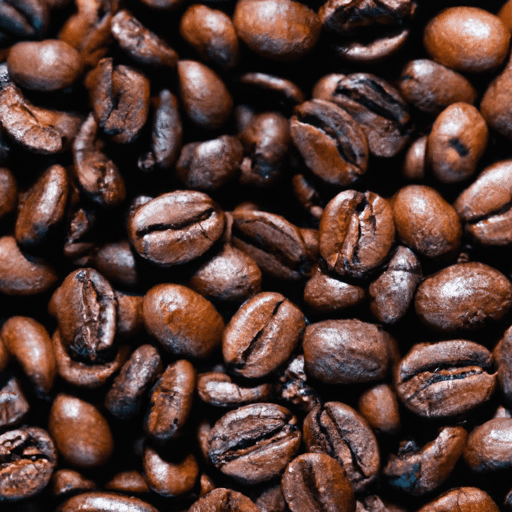The Rich and Flavorful World of Whole Bean Coffee
Coffee is not just a beverage; it’s a morning ritual for millions of people around the world. While many people may enjoy their daily cup of joe, not everyone realizes the potential held in a bag of whole bean coffee. Not only can you brew a delicious cup of coffee, but these little beans can also elevate your culinary creations to new heights. In this article, we will explore the wonderful world of whole bean coffee and discover its taste, common uses in cooking, nutritional value, and interesting history and facts.
1. The Taste of Whole Bean Coffee
Whole bean coffee offers a distinct and extraordinary flavor profile that coffee enthusiasts cherish. The taste of coffee can vary depending on the region it is grown, the altitude, the type of beans, and the roasting process. However, in general, whole bean coffee provides a rich, bold, and earthy flavor with hints of chocolate, caramel, or even fruity notes. The aroma alone can transport you to a cozy coffee shop on a rainy morning.
2. Common Uses in Cooking
Coffee isn’t just for sipping – it can also enhance the flavors of various dishes, both savory and sweet. Here are a few popular uses of whole bean coffee in cooking:
a. Savory Dishes
- Coffee Rubs: Whole bean coffee grounds can be combined with spices and used as a flavorful rub for meats like beef, pork, or poultry.
- Marinades: Adding freshly ground coffee to a marinade can infuse meats with a unique smoky and rich flavor.
- Sauces: Coffee can be incorporated into sauces such as barbecue sauce or mole sauce, providing a complex depth of flavor.
b. Sweet Treats
- Desserts: Coffee can be an excellent addition to desserts like tiramisu, coffee-flavored ice creams, or chocolate cakes, intensifying their taste and adding a slight bitterness.
- Coffee Syrups: Whole bean coffee can be used to make a syrup, which can then be drizzled over pancakes, waffles, or used in cocktails for a delightful twist.
3. Nutritional Value
Whole bean coffee is not just a treat for the taste buds; it also offers some nutritional benefits. While it is low in calories, it contains essential nutrients and antioxidants. A cup of coffee can provide:
- Caffeine: Coffee is well-known for its caffeine content, which can offer a gentle energy boost and improve mental alertness.
- Antioxidants: Coffee is rich in antioxidants, which help fight against free radicals and protect the body from damage.
- Minerals: Coffee contains minerals like magnesium, potassium, and niacin, which are necessary for various bodily functions.
4. Interesting History and Facts
Coffee has a fascinating history that spans back centuries. Here are a few interesting facts about whole bean coffee:
- Origins: Coffee was first discovered in Ethiopia in the 9th century, and its popularity spread to the Arabian Peninsula, where it was cultivated and traded.
- Legend of the Dancing Goats: According to popular folklore, the energizing effects of coffee were discovered by a goat herder in Ethiopia who noticed his goats getting lively after consuming coffee cherries.
- Global Commodities: Coffee is one of the most widely traded commodities worldwide, with millions of people involved in its production, distribution, and consumption.
- Roasting Artistry: The art of roasting coffee beans has evolved over time, with expert roasters honing their skills to unlock the perfect balance of flavor, aroma, and acidity.
Whole bean coffee is not only a daily delight; it holds a world of possibilities in the culinary realm. Experimenting with whole bean coffee in your cooking can open up a new universe of flavors and bring depth to your dishes like never before. So, the next time you reach for that bag of whole bean coffee, don’t limit yourself to just brewing a cup – let your creativity soar and explore the diverse ways coffee can elevate your cooking.
Whole Bean Coffee
Here are some interesting facts about whole bean coffee:
Origin: The cultivation of coffee beans is believed to have begun in Ethiopia, with evidence dating back to the 9th century. It later spread to Arabia, and by the 16th century, coffee cultivation had reached Europe.
Common Uses: Whole bean coffee is most commonly used to make brewed coffee. After being roasted, whole coffee beans are ground and brewed to create a flavorful and aromatic beverage. It can be prepared using various brewing methods such as pour-over, French press, espresso, or drip brewing.
Nutritional Benefits: Coffee contains several bioactive compounds, including caffeine, which is a natural stimulant. It can help improve alertness and concentration. Additionally, coffee is a source of antioxidants, which have been associated with potential health benefits, such as reducing the risk of certain diseases.
Unique Properties: Whole bean coffee has a unique property of preserving its flavors and aromas for a longer period compared to pre-ground coffee. This is because grinding exposes the coffee to air and accelerates oxidation, leading to flavor degradation. By grinding beans just before brewing, the flavors are better preserved.
Historical Significance: Coffee has played a significant role in human history. It has been a beverage of choice for centuries and has influenced various social and cultural practices. Coffeehouses, often called “penny universities,” were gathering places where people would exchange ideas and engage in intellectual discussions during the 17th and 18th centuries.
Remember, to experience the freshest and most flavorful cup of coffee, it is recommended to store whole beans in an airtight container away from light and temperature fluctuations, and grind them just before brewing.




Use the share button below if you liked it.
It makes me smile, when I see it.